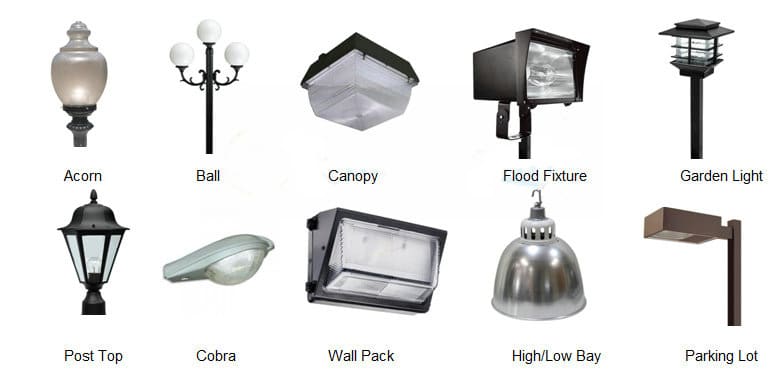
How To Choose a Good Quality LED Corn Light Bulb?
What are LED corn bulbs?
LED corn bulbs named after an ear of corn, are energy-efficient bulbs that are meant to replace HID lamps (such as metal halides, mercury vapor lamps, and sodium vapor lamps), incandescent bulbs, and fluorescent lights.
They perfectly substitute these lamps in lighting fixtures such as high bays, shoeboxes, bollards, pole tops, and other enclosed fixtures. These older lights typically have an omnidirectional light distribution pattern and their color temperature ranges from warm to cool.
The one feature that differentiates LED cob lights from other LED lights is the positioning of the LED chips. They are vertically placed on a metallic structure — the "cob". And because numerous light-emitting diodes are used, the bulbs provide bright, wide-scope light that is perfect for commercial environments.
LED corn bulbs are comprised of individual light-emitting diodes that may vary in number. The number of diodes used usually depends on the size and style of the bulb.
Where Are These Lights Used?
LED corn lights are used in streets, roads, football stadiums, car parks, highways, pathways, and in building interiors to replace high bay lights. They offer easy installation and brighten up spaces more than traditional lamps. They are energy-rated replacements for high-lumen lights and work well in both indoor and outdoor spaces.

Construction of a LED Corn Bulb
Just like lighting sources vary, LED corn bulbs are not equal. Some have better construction and components compared to others. High-quality LED lights usually have the following components:
Optics: These evenly distribute the light and are normally made from plastic to minimize the chances of shattering. LED Chips: These small yellow pieces create the light and are usually attached to a metallic piece.
Heat Sinks: These dissipate the heat produced by the LEDs while they are in operation.A heat sink provides the path for heat to travel from the bulb to the outer environment.
Drivers: Also known as circuit boards, the drivers pull power from the sockets and tell the LEDs to switch on, switch off, change color, or dim.
Housing: The housing for a LED light must be conductive to heat as the driver usually heats up when power passes through it.
Base: LED corn lamps can be used in most screw-in sockets. When buying these lamps, be sure to choose the right base. There are LED corn lights for E26 and E27 base bulbs (Medium Edison Screw), and E39 and E40 base bulbs (Mogul Edison Screw).
Benefits of LED Corn Bulbs
Better Energy Utilization
One of the biggest energy consumers in our world today is lighting. Because of the current environmental crisis, the world is now embracing energy-efficient lighting solutions. Traditional lighting systems are big energy wasters and only convert 20% of the energy they draw into light. They convert 80% into heat. LED corn lights, on the other hand, have high energy conversion efficiency and change 90% of electrical energy into visible light.
Long Lifespan
LED corn lights have a long lifespan and do not burn out or fail like conventional lighting sources. Incandescent lamps have a lifespan of 1,000 hours, fluorescent lamps last for 15,000 hours, while high-pressure sodium lamps have a rated life of 24,000 hours. Additionally, the lifespan of these lights is usually affected by the switching frequency (rapid cycling). The more they are switched on and off, the shorter their lifespan gets. Quality LED lights have a minimum life expectancy of 50,000 hours, which can be longer depending on the construction of the lamps or fixtures.
Thanks to their long operational life, LED corn lights reduce the costs of replacing bulbs in commercial environments, making a lighting system low maintenance. They are also not affected by the switching frequency and work well with light control systems, further decreasing energy usage.
More Durable
Since LED lights are devoid of glass enclosures and filaments, they are resistant to breakage, vibrations and other impacts. Traditional lights usually have glass or quartz exteriors which are highly susceptible to damage. LED chips are mounted on circuit boards and connected with soldered leads.
Cold Temperature Operation
When used in low-temperature environments, fluorescent lamps require higher voltage to start and their luminous flux decreases. In contrast, the performance of LED lights increases as operating temperatures decrease. This feature makes the lights ideal for outdoor applications such as parking lots and building perimeters.
Instant On
HID lamps do not attain full brightness the minute they are switched on. They take anywhere between 5 to 15 minutes to achieve maximum light output. And in the event of a voltage drop or a momentary interruption of current which extinguishes the lamps, they need a “restrike” time (for the gases to cool and pressure to drop) before they can produce light again. This can take 5 to 15 minutes, depending on the HID light being used.
Categories
latest blog
© Copyright: 2025 FUZHOU COLSHINE ELECTRIC CO., LTD. All Rights Reserved

IPv6 network supported